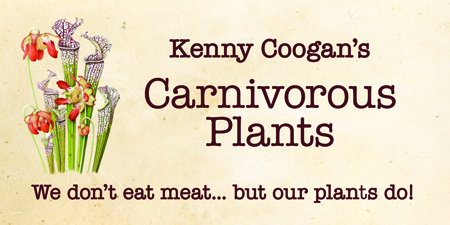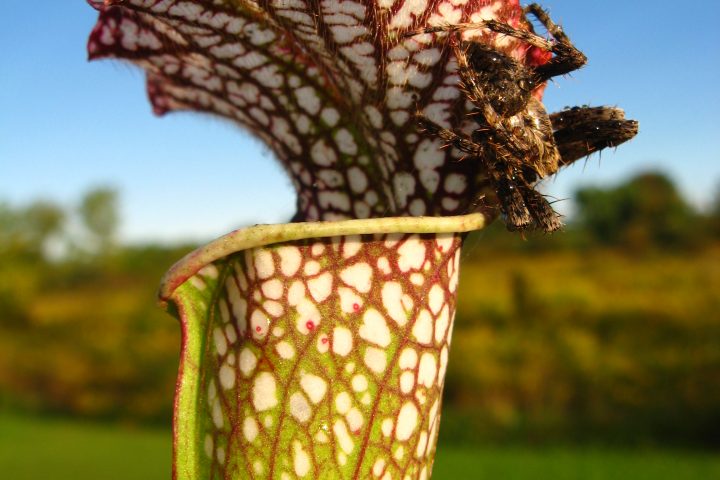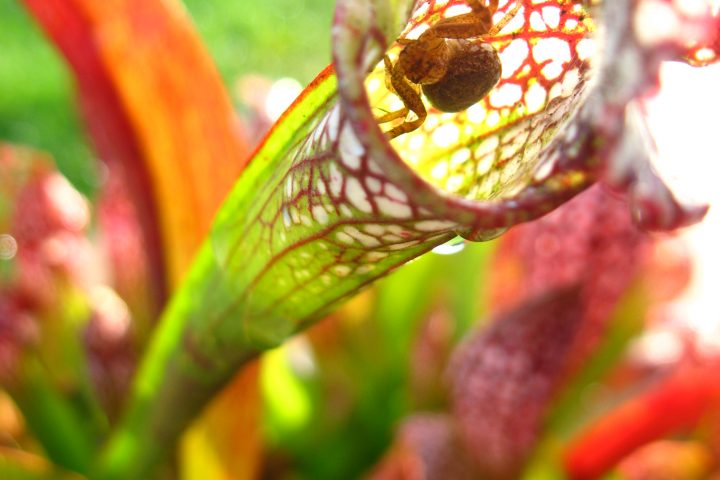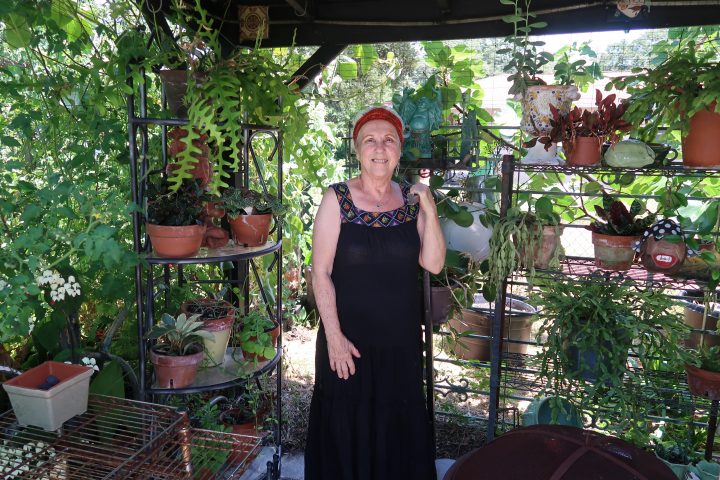A few houses down from the Hillsborough River, Rick and Nanette O’Hara’s early 20th century bungalow home sits on a small piece of property. Nestled in Seminole Heights, a historic neighborhood in central Tampa, their yard size and house is comparable to that of their neighbors. The O’Hara’s plant selection and landscaping, however is quite exceptional.
“He and I planted literally everything in here, together,” Nanette tells me on a recent tour of her home. The front yard is filled with shade tolerate plants including beautyberry, Simpson’s stopper, saw palmetto and caladiums. Their small yard has a big impact. “I have to buy stuff that likes shade and caladiums are an easy way to fill space and add color,” Nanette adds.
Eight years ago, their yard was filled in by dying St. Augustine grass. Not wanting to perpetuate the need of fertilizers and herbicides, they removed the grass to start with a fresh canvas. Rick rented a bobcat to level the property.
“It teachers you a real appreciation for the skills these guys who drive heavy machines have. It is not as easy as you think it is,” Rick says.
“No, it is not,” Nanette joins in. “He leveled the entire yard and he did cut the Verizon cable…twice. Two weeks in a row.”
In his defense the cable company took a few short cuts, by literally cutting corners and only burying the cable down a few inches.
Once the land was flat, they added weed cloth, 15 cubic yards of mulch, and pebbles and shells for walkways. Then they started replanting their yard. The whole project took about three months.
“I have a lot of natives and a lot of tropicals too,” Nanette says as she shows me a native wild plumbago. Plumbago zeylanica is a long-lived perennial which only reaches one foot tall. The species is typically grown to attract butterflies, particularly Cassius blue. The plant has small white flowers and is not as showy as the introduced blue plumbago but does well in a shady understory setting.
“A lot of the plants come from other gardeners,” Nanette explains as we walk by dancing ladies ginger (Globba schomburgkii) and peacock ginger (Kaempheria sp.).
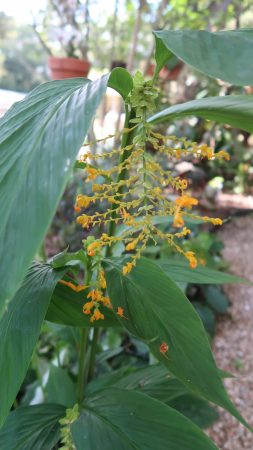
The appeal of landscaping is the combination of foliage and hardscapes. I was really impressed with the clean delineation of the pathways from the flower beds. Rick says he uses a leaf blower to remove the light leaves from the pebbles to keep up appearances.
“At this point I am no longer buying any more mulch. Mother nature and my beautiful oak tree provide everything we need,” Nanette says. “If I put a too heavy layer of mulch it inhibits the seed germination for my wild flowers.”
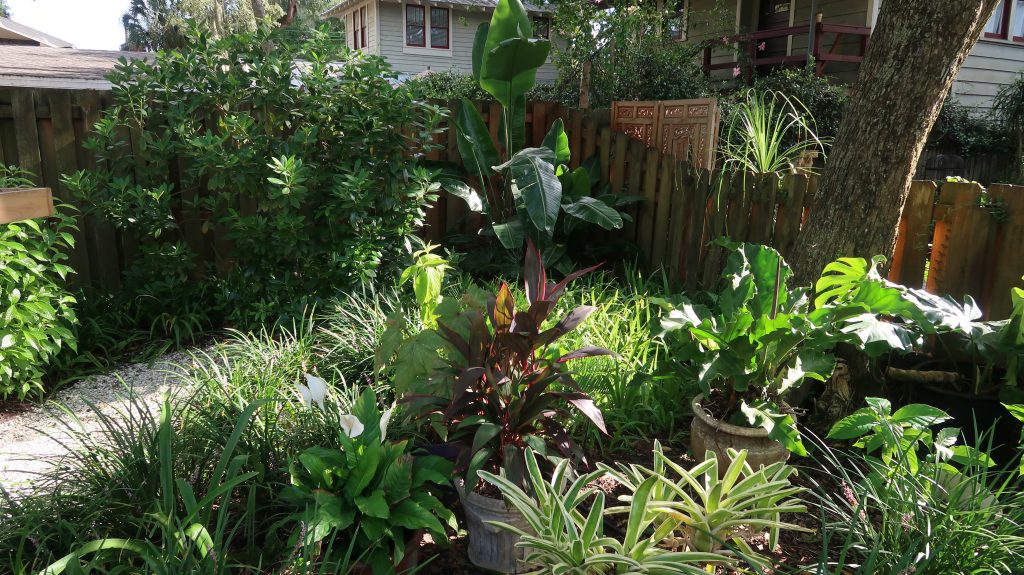
As we walk from the front yard to the back the pathway changes from pebbles to shell.
“We use shell in the back, because we needed so much material and we didn’t have money to pave back here. And we thought it gave it a Florida look,” Nanette says.
We pass a young crossvine, Bignonia capreolata, a new addition this year. It’s a beautiful native vine with red tubular flowers that is attractive to hummingbirds and butterflies. It is growing on a trellis to keep it controlled, as it has a fast growth habit, and will need to be controlled in this small yard. An amberwing dragonfly dances in front of us.
“With a lot of natives, what I found is that it takes a while for them to get going, but once they do they take off,” Nanette says.
One area of the backyard is a mix of firebush, fire spike, an anthurium and Monstera deliciosa. Nanette says that the monstera fruit is awesome. “It is fabulous. It is sweet. You just slice into them and they are good.”
In another section wild coffee, blue curls (Trichostema dichotomum), iron weed, native porter weed, and beach sunflower show off their native foliage. The wild coffee is ready to go to berry, which the birds will enjoy.
Adjacent to that bed are Florida petunias, pentas, more blue curls, blanket flowers and Florida’s state wildflower coreopsis.
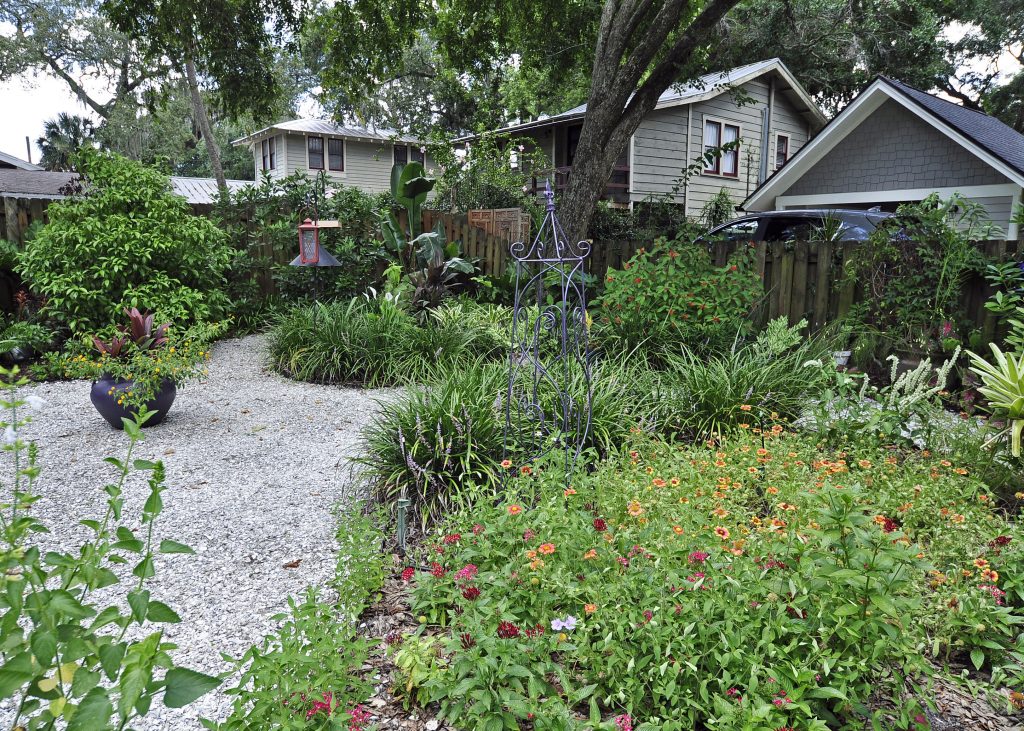
“For some reason the blue curls like to seed right along the edge of the bed,” Nanette notices. A white shrimp plant propagated from cuttings from a friend is in bloom. Blue daze, tropical sage, rosemary and parsley overflow from an old bathtub. The upcycled herb container during the summer is mostly grown to support butterflies and caterpillars.
“I don’t have much space, so this is my main little butterfly and bee bed,” Nanette points to a bed east of their patio. The golden rod stands tall with mistflower, tickseed, blanket flower, and elephant’s foot (Elephantopus elatus) filling in the space. Nanette says that the bees love the elephant’s foot. A few scorpion tail plants grow in the back, to feed tiny wasps.
On their small property they have three rain barrels. Last January Nanette cleaned them while they were empty. “I took that time to repaint them. This is my attempt at artwork. It came out pretty well.”
Using a combination of spray paint, leftover exterior house paint, and a clear sealer Nanette updated her rain barrels – a project I now want to attempt. In the winter earth boxes support leafy greens. The gardens are always changing.
“I want to add more natives. That is where my interest is going. We want to add more plants that add shelter or food for them,” Nanette says. “I am amazed that even in a small space how much wildlife we attract. You don’t need a lot of space to attract wildlife.”
“She has done a great job maintaining it, alternating it, and coming up with new ideas. I’m the grunt labor,” Rick jokes.
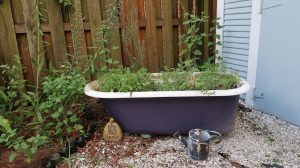
“He has a passion for things that use the garden – the butterflies and the birds. He is very observant,” Nanette says. “In the cooler months, we will be out here every night, sitting on the back patio with a wine or beer and binoculars.”
The O’Hara’s Tips for Small Yards
Nanette – “On a small property you must account for how big things are going to get. When you are dealing with small spaces, you really have to scale down and make sure you can accommodate the mature size.”
Rick – “We did the whole yard at once and you don’t really have to do that. When people ask us about it I say quite frankly you are better off selecting a section of your yard, like 20’ x 20’, coming up with a plan, complete that first and see how it works out.”
To learn more about homesteading and gardening, check out my newest book: 99½ Homesteading Poems
 Originally published in Florida Gardening Magazine Summer 2018.
Originally published in Florida Gardening Magazine Summer 2018.
